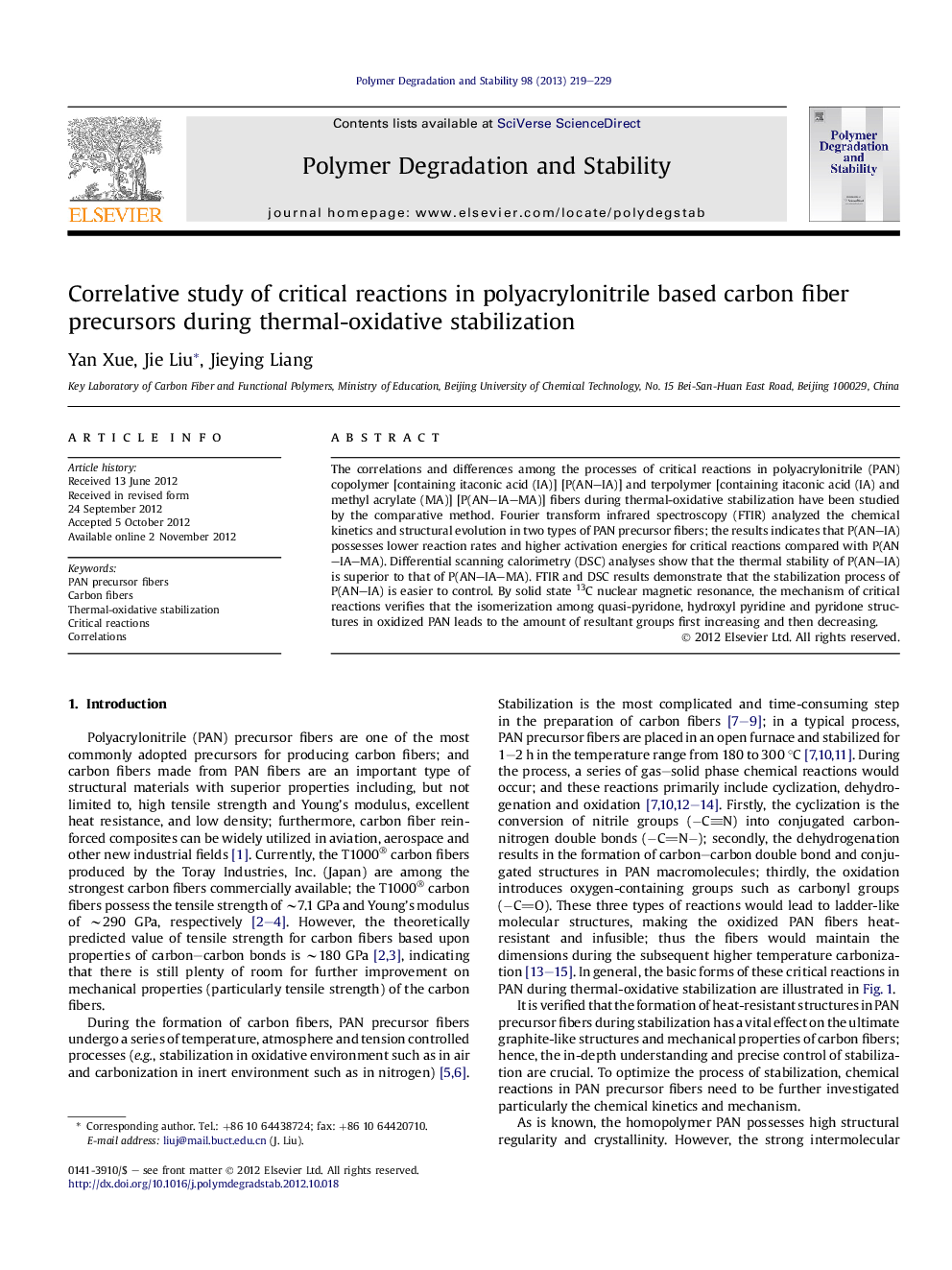| Article ID | Journal | Published Year | Pages | File Type |
|---|---|---|---|---|
| 5202451 | Polymer Degradation and Stability | 2013 | 11 Pages |
Abstract
The correlations and differences among the processes of critical reactions in polyacrylonitrile (PAN) copolymer [containing itaconic acid (IA)] [P(AN-IA)] and terpolymer [containing itaconic acid (IA) and methyl acrylate (MA)] [P(AN-IA-MA)] fibers during thermal-oxidative stabilization have been studied by the comparative method. Fourier transform infrared spectroscopy (FTIR) analyzed the chemical kinetics and structural evolution in two types of PAN precursor fibers; the results indicates that P(AN-IA) possesses lower reaction rates and higher activation energies for critical reactions compared with P(AN-IA-MA). Differential scanning calorimetry (DSC) analyses show that the thermal stability of P(AN-IA) is superior to that of P(AN-IA-MA). FTIR and DSC results demonstrate that the stabilization process of P(AN-IA) is easier to control. By solid state 13C nuclear magnetic resonance, the mechanism of critical reactions verifies that the isomerization among quasi-pyridone, hydroxyl pyridine and pyridone structures in oxidized PAN leads to the amount of resultant groups first increasing and then decreasing.
Keywords
Related Topics
Physical Sciences and Engineering
Chemistry
Organic Chemistry
Authors
Yan Xue, Jie Liu, Jieying Liang,
